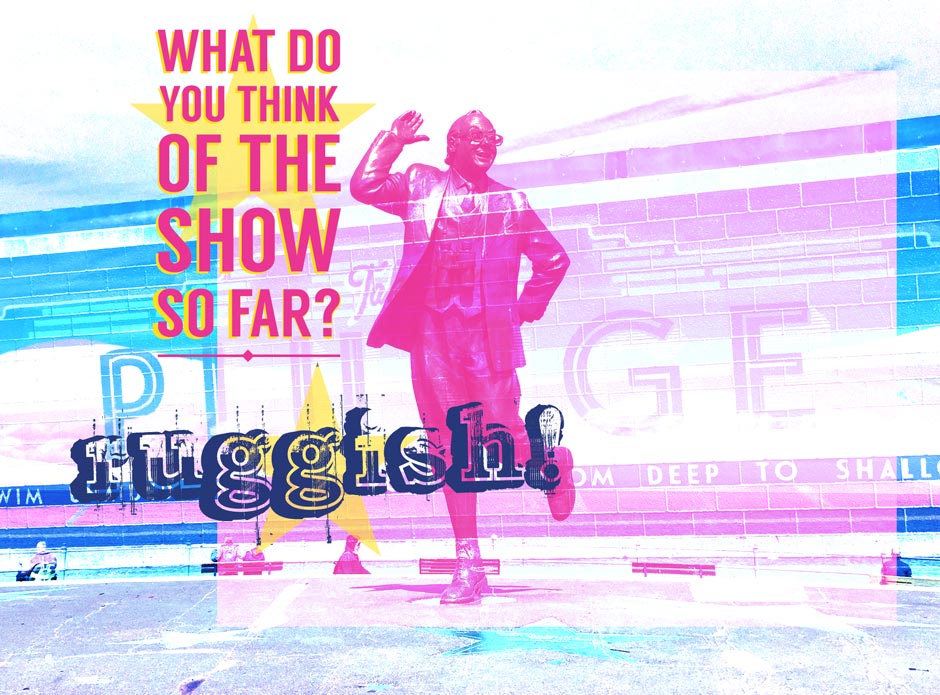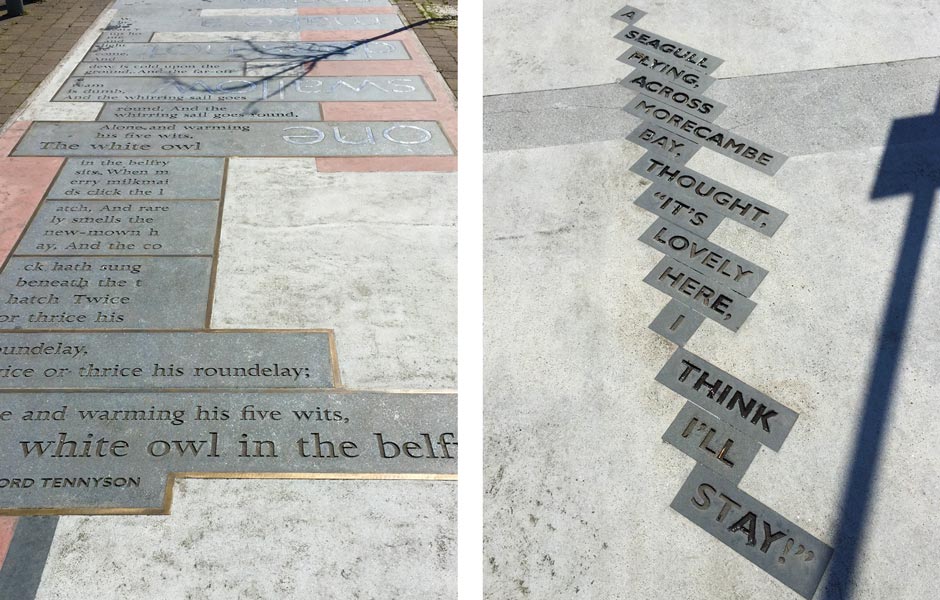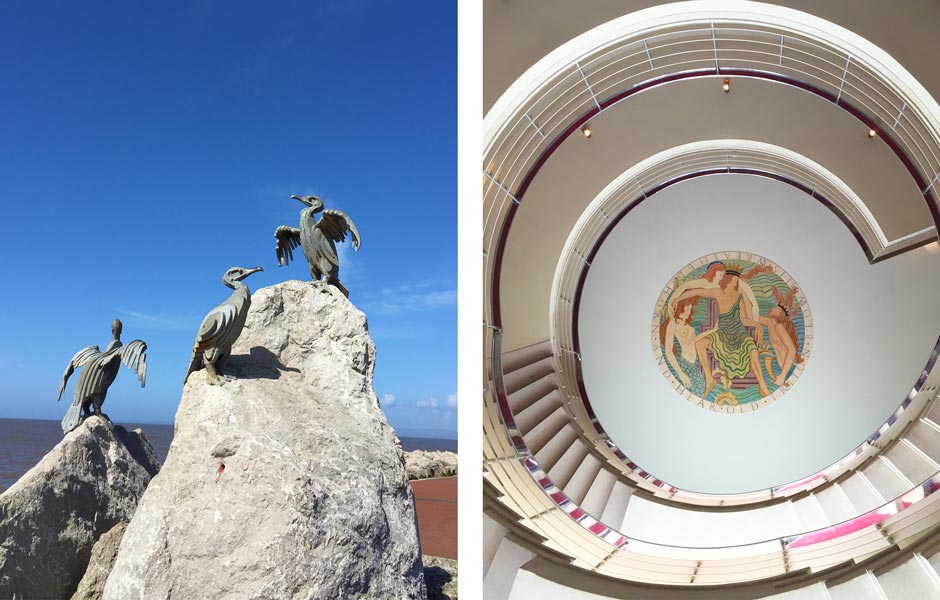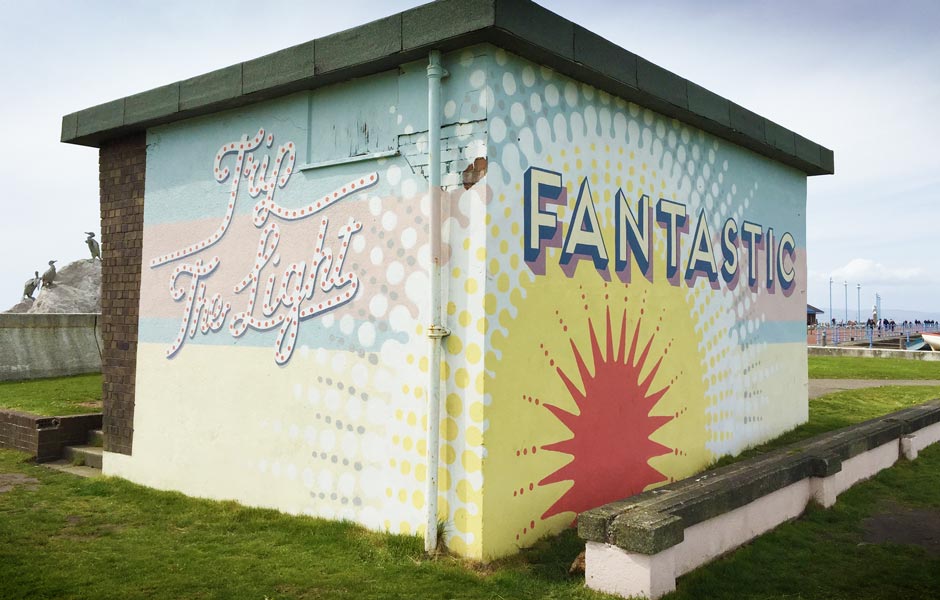Blog
Why Not Visit

I’ve been determined to view an art installation entitled ‘A Flock of Words’ in Morecambe Bay for a good number of years, so recently I took a trip up north to visit the typographic sculpture as well as view additional public artworks along the Lancashire coast.
For anyone who may not have heard about the sculpture, A Flock of Words is a 300m long path which leads visitors from the new station to the sea front. It was build back in 2003 and was a result of a collaboration between Andy Altman of Why Not Associates and sculptors Gordon Young and Russell Coleman. Based on the theme of migratory birds – Morecambe itself being a bird-watcher’s paradise – the pavement is formed from poems, sayings, nursery rhymes and lyrics – from the book of Genesis to Shakespeare to Spike Milligan, Burns and Milton. As well as this project, there are a whole series of ornithological public artworks surrounding the bay, including cultures of birds, stone eggs on jetties, and of course the famous larger than life-sized statue of Eric Morecambe.

To design the path, letter work was used from the typefaces designed by Eric Gill, who’s carvings can also be seen on the interior of the Midland Hotel, which I stayed in during my visit to the seaside town. The building was designed by the architect Oliver Hill in an Art Deco style and built in 1933 by the London Midland & Scottish Railway. Gill produced several works for the hotel including two seahorses for the outside entrance, the Neptune and Triton medallion on the ceiling at the top of the circular staircase, and a stone relief of Odysseus positioned in the entrance lounge.

Unfortunately, walking along the sea front at Morecambe there is clear evidence of the resorts decline. The promenade may have been smartened up, the Midland Hotel may have been restored, but it’s hard not to notice the wilful destruction and sheer neglect of this nostalgic area. Even so, things are being turned around and it’s residents all seem to have confidence smiles on their faces. The ‘Super Swimming Pool’ may have been relocated to its history books, but with a little help from Arts Council England, paintings such as ‘Trip the Light Fantastic’ helps ensure that local events & celebrations leave a positive and lasting mark on this coastal town.

As described by local artist Kate Sundae, responsible for the revitalisation of local landmarks, ‘the messages painted will be consistently positive and amusing, equally thought-provoking and eye-pleasing. They will be playful, cheerful and uplifting, poetic and thoughtful – encouraging of local entrepreneurship and championing of local people and businesses and will have a positive visual impact around the town.’
